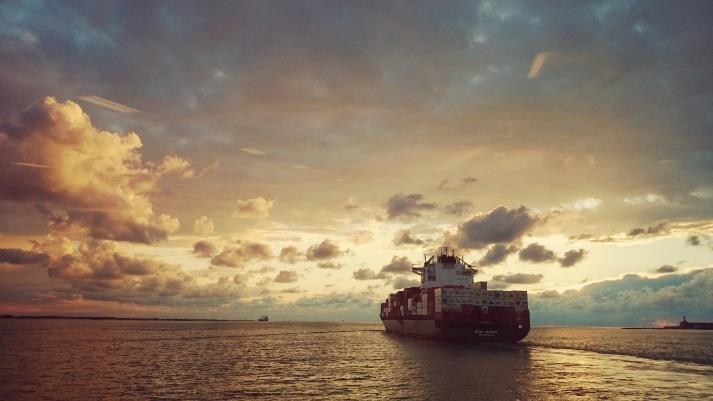
4 minute read
LNG: The Future Fuel
LNG: The Future Fuel 6
Amritraj Sutar - PGDM RBA 2019-21, Prin L. N. Welingkar Institute of Management Development and Research, Mumbai
Advertisement
Two decades ago, the idea of going green in corporate were never in talk because it was thought to be cost prohibitive. Ten years later, all of them started paying attention and embraced the idea of sustainable practices so to develop competitive advantage over their competitors. Not only corporates, nations and international organisations across the world decided to restrict the activities proven to be harmful to the planet.
Keeping this in mind, Sustainable transportation has become the need of the hour because of the increasing global warming and pollution due to continuous consumption of resources. To tackle this, huge investments are being done to look for alternate fuels which are clean and eco-friendly. Recently, International Maritime Organisation announced its goal to reduce its carbon footprint by 50% in the shipping industry by 2050. This led the industry to immediately look for cleaner alternative fuel.
Liquefied Natural Gas (LNG) has been around for
more than 50 years and has been growing in
demand in Japan, China, India and Southeast Asia for power and heat generation. LNG is natural gas in liquid form which takes only 1/600 th of the
volume as compared to that of natural gas with low sulphur content. According to IMO’s new
regulations to reduce sulphur content in fuels from shipping activities, the bunker fuel to be used has to have sulphur content of 0.5% as compared to present 3.4% by April 2020.
A comparative study on alternate marine fuels was conducted by DNV-GL to understand the operational viability and effectiveness of six different fuels i.e. hydrogen, methanol, ammonia, hydrotreated vegetable oil (HVO), biofuel, LPG and full battery electric systems as compared to LNG and heavy fuel oil on 11 set of parameters. The fuels were extensively evaluated on the basis of energy value in one tonne of fuel, performance in terms of safety and reliability, local and global emissions standards compliance, current availability in terms of geographic bunkering, present and predicted cost of fuel, flammability, toxicity, global production capacity and associated cost of engines and its safety.
The study showed that there can be variety of clean alternative fuel which can help in meeting the GHG (Greenhouse gas) reduction target of IMO by 2030 and 2050 but most of them like hydrogen and ammonia still need significant development to stand up to industry requirements. Though these fuels will outperform LNG but they still require huge amount of investment in developing infrastructure to improve the production capability, storage and supply chain compared to which LNG requires very low capital expenditure. Therefore, at least for time being, LNG came out to be the most commercially viable and mature fuel for shipping business. But it’s still a matter of debate whether the LNG will be able to achieve
According to the report, the demand for LNG engine technology also proactively increased in quite few years with ready availability of infrastructure and rapid expansion in supply chain globally. The life expectancy of any vessel is nearly 25 years. The shipping managers have to act decisively and invest in technologies and vessels keeping in mind the future impact of environment regulations on their operational cost and the type of fuel used.
Hence it is apparently obvious that LNG capable vessels are commercially viable, economical and will give better return on investment to the industry. It will safeguard the interests of the shipping managers by facilitating competitive advantage and will improve sustainability in the long run.
The challenge to meet the IMO standards is unclear for Indian shipping for now. The use of low emitting sulphur fuel will force the cost of shipping up and make business unviable. As said by the Indian National Shipbuilders Association, it is estimated that the cost of LNG will go up by 80$ to 200$ per tonne and the addition of scrubbers in the new LNG based vessels will also increase cost up to 2 million dollars. Such cost increase is an offset by increase in freight charges, or a fuel surcharge. Indian companies understand and support the regulations but they fear that customers will shun shipping and move into a cheaper version of travelling like rail and plane.
Though all the benefits of LNG are known, most of the organisations are of the believe that it will not be able to meet the goal of the IMO emission standard for GHG reductions. The European union, for example, wanted the curtailment of 70% and believed that the present goal is not par the Paris Agreement. Even though being the need of today, LNG is still a carbon fossil and produces carbon dioxide when you combust it which is not exactly the objective of the Paris Agreement for
climatic change. The organisation should be looking for not a marginal or incremental change but the wholesale change to the zero-carbon energy systems. There is lot to be done in coming future so to use more cleaner alternative fuels like hydrogen and bio derived fuels. Till then, we can say that the LNG is going to be the most positive, scalable and futureproof fuel available to improve the shipping industry emissions.
--------------------------o-------------------------





